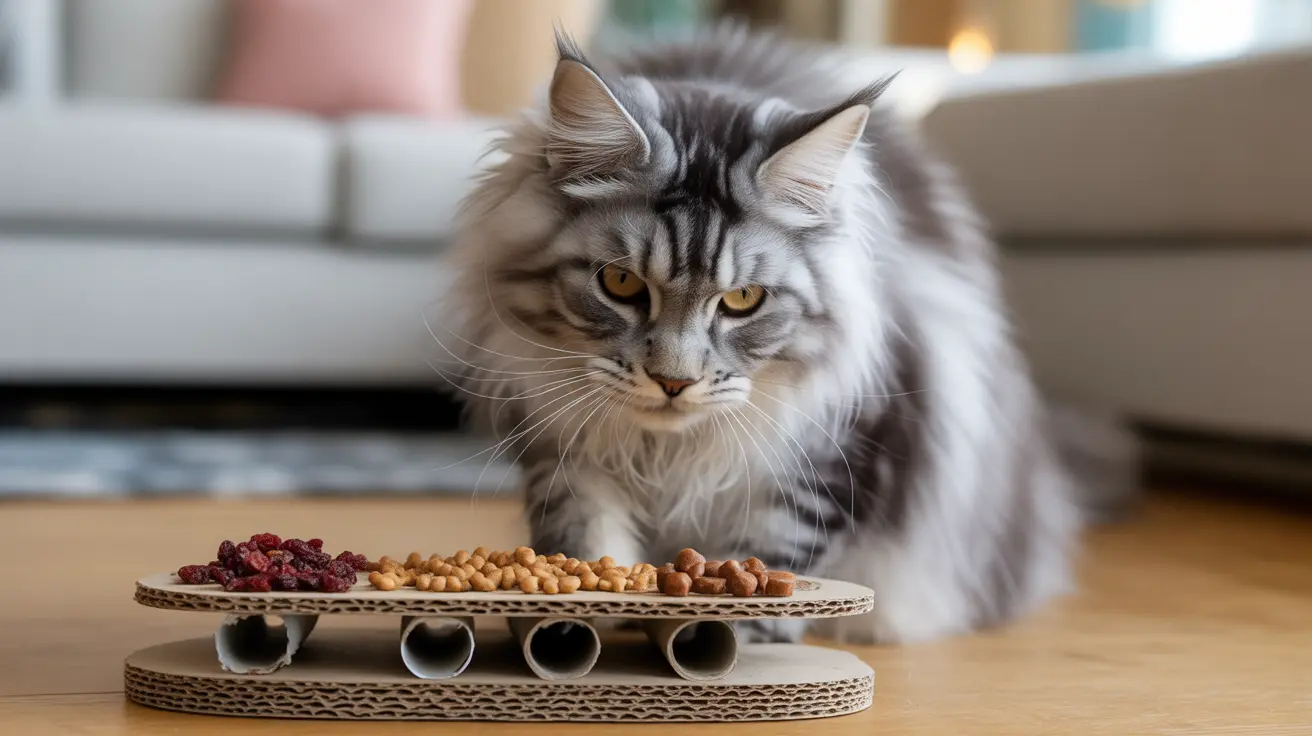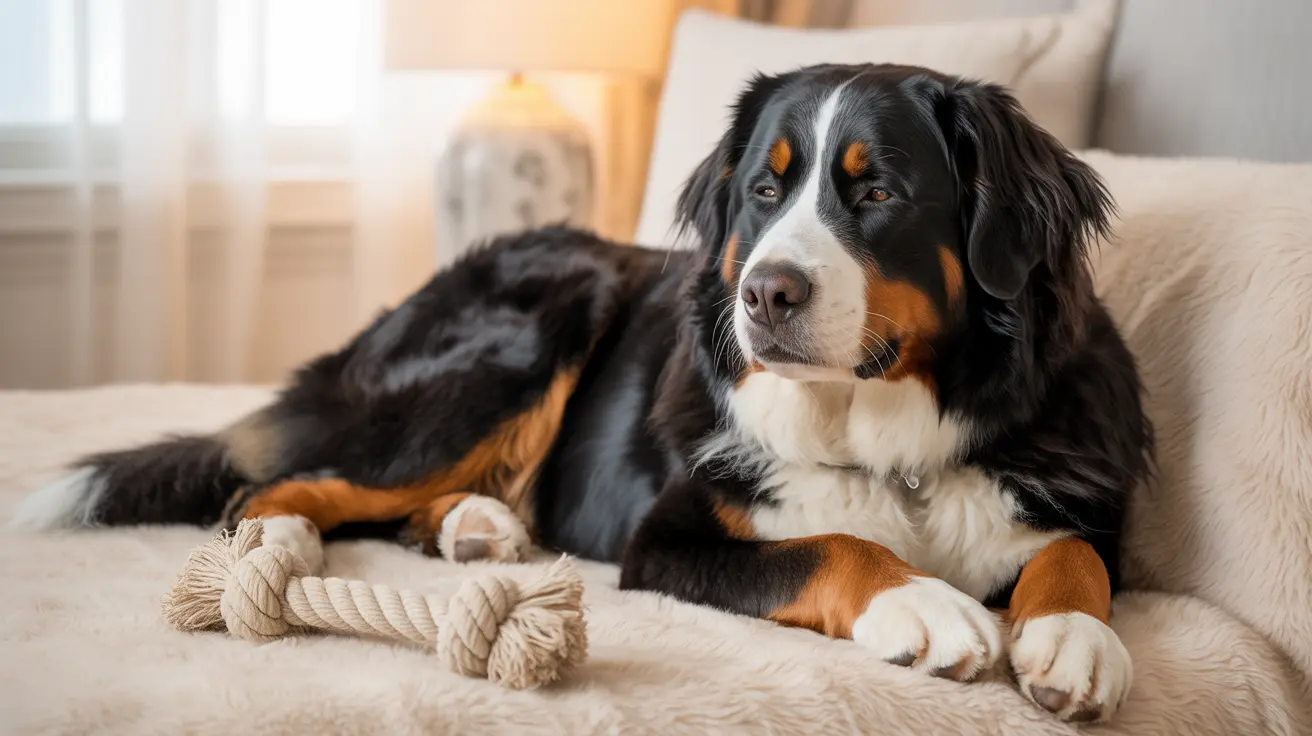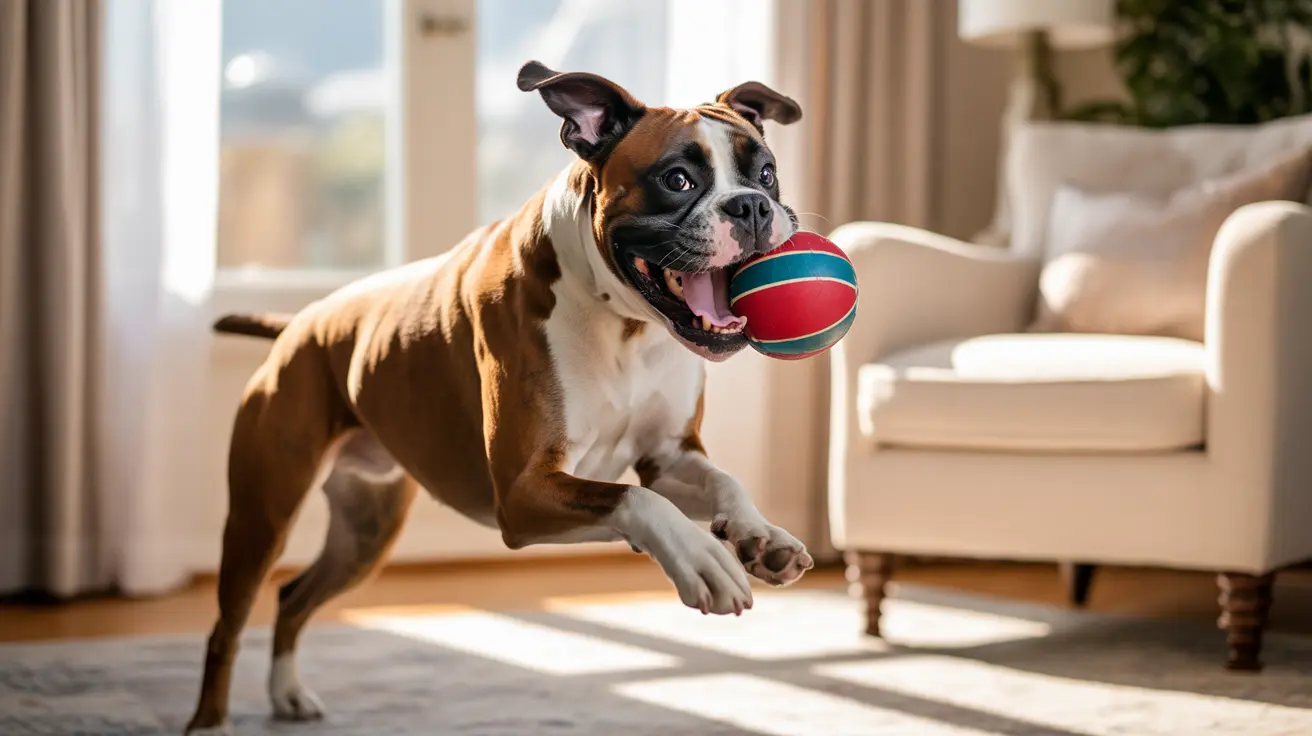DIY Homemade Cat Foraging Board: Simple Projects to Keep Your Cat Mentally Stimulated
Creating a homemade cat foraging board is one of the most effective and affordable ways to provide essential mental stimulation for your feline companion. These DIY puzzle feeders tap into your cat's natural hunting instincts while using common household materials you likely already have at home. With adult cats spending about 30 percent of their day hunting in the wild, indoor cats desperately need activities that mimic this natural behavior to prevent boredom, stress, and behavioral problems.
A foraging board transforms mealtime into an engaging puzzle-solving experience, encouraging your cat to work for their food just as they would in nature. Unlike simply placing food in a bowl twice a day, these homemade enrichment tools align with cats' natural grazing patterns and need for mental stimulation. Whether you're dealing with a food-motivated cat or one who seems uninterested in toys, a well-designed homemade cat foraging board can revolutionize their daily routine and overall wellbeing.
Understanding the Benefits of Cat Foraging Boards
Feline foraging toys provide an often overlooked form of environmental enrichment for indoor cats by encouraging them to work for their food, mimicking their natural hunting behavior. Domestic cats are obligate carnivores who naturally nibble and pick small meals throughout the day, preferring to hunt and eat alone while maintaining control over their resources.
The mental and physical stimulation provided by foraging boards offers numerous benefits for your cat's health and happiness. These DIY puzzle feeders enhance cognitive function, reduce boredom and stress, and can promote healthier eating habits and weight management. They foster natural free feeding behaviors while providing the environmental enrichment that indoor cats desperately need. Additionally, foraging toys help prevent feeding-related stress and aggression in multi-cat households by allowing cats to work for food at their own pace in different locations.
Essential Materials for Your Homemade Cat Foraging Board
The beauty of creating a homemade cat foraging board lies in using everyday household items that would otherwise be discarded. The most successful DIY foraging boards incorporate materials that cats can easily manipulate with their paws while providing an appropriate level of challenge.
Common household materials perfect for foraging boards include empty kitchen paper rolls, toilet paper rolls, plastic washing balls, egg cartons, and small cardboard boxes. For the base, you can use a sturdy piece of cardboard, a shallow wooden tray, or even a large pizza box. The key is ensuring all materials are clean, safe, and appropriately sized to allow paw access without letting your cat's head get stuck inside any openings.
Step-by-Step Instructions for Building Basic Foraging Boards
Creating your first homemade cat foraging board should start with simple, beginner-friendly designs. Begin by selecting a sturdy cardboard base approximately 12 by 18 inches. Horizontally stacked empty toilet paper rolls work exceptionally well for beginners, as they provide easy access and visual appeal for cats who need to see their treats.
Secure the rolls to your cardboard base using non-toxic glue or double-sided tape, spacing them about an inch apart. Place small treats or kibble inside and between the rolls, ensuring some pieces are easily accessible while others require more effort to extract. Avoid vertical tube arrangements initially, as these are significantly harder for cats to use and may discourage interaction.
For a more advanced design, create a plywood foraging board by cutting a piece approximately 15 by 24 inches. Attach small wooden obstacles about 1.3 inches in diameter and 1 to 2.5 inches high using screws. These obstacles should allow paw access but prevent cats from simply grabbing large amounts of food at once. Always sand any rough edges to ensure safety.
Creating Alternative Foraging Solutions
Beyond traditional boards, you can create effective "foraging boxes" that encourage natural digging and hunting behaviors. Fill a shallow box or bowl with materials like crumpled paper, clean corks, or small balls, then scatter treats throughout. This setup mimics the experience of hunting through grass or leaves, providing excellent mental stimulation.
Stationary puzzles serve as excellent beginner toys and are incredibly easy to make at home using boxes with strategically placed holes. Cut openings just large enough for your cat's paw in various locations around a sturdy box, then place treats inside. The cat must reach through the holes to extract their reward, providing both mental and physical exercise.
Customizing Foraging Boards for Different Cats
Successful foraging board implementation requires understanding your individual cat's preferences, age, and skill level. Start with transparent or partially open designs that allow cats to see, smell, and hear the food inside. This visual confirmation helps motivate initial interaction and builds confidence in hesitant cats.
For older or less active cats, ensure obstacles are lower and openings are more generous. Younger, more agile cats can handle increased complexity with smaller openings and taller obstacles. In multi-cat households, place multiple foraging toys in different locations to reduce competition and stress. Always ensure every cat has access to food and isn't being bullied away from the foraging opportunities.
Safety Considerations and Maintenance
When creating homemade cat foraging boards, prioritize safety by avoiding materials that could splinter, break into small pieces, or contain harmful chemicals. All cardboard should be clean and free from staples or plastic tape that cats might ingest. Wooden elements should be sanded smooth and made from untreated wood.
Regular cleaning and maintenance ensure your homemade foraging board remains safe and appealing. Wipe down surfaces weekly with pet-safe cleaners, and replace cardboard components when they become worn or damaged. Store filled foraging toys in airtight containers to maintain food freshness and make weekly refilling more convenient.
Introducing Your Cat to Foraging Boards
Patience is crucial when introducing cats to new foraging experiences. Initially, cats may eat quickly and even vomit, but they will adjust to a natural grazing pattern over time. Start by offering the foraging board alongside regular food bowls, gradually transitioning to puzzle feeding as your cat becomes comfortable.
To motivate reluctant cats, begin with easy, transparent toys with multiple holes that clearly dispense kibble. Use unique foods or high-value treats inside the toys to spark interest. Sprinkle some kibble around the foraging board and in your cat's usual resting areas to encourage investigation and interaction.
If your cat initially ignores the foraging board, try changing its location or switching to different treats. Some cats prefer wet food applications, which can be accommodated using shallow designs that allow licking and scooping behaviors similar to consuming natural prey.
Advancing to More Complex Designs
As your cat becomes proficient with basic foraging boards, progressively increase difficulty by reducing opening sizes, using opaque materials, or combining multiple puzzle elements. Larger, more complex toys provide added challenges and work particularly well in multi-cat homes where competition might otherwise be an issue.
Consider incorporating rolling elements alongside stationary puzzles, such as placing foraging eggs or balls inside larger box setups. These erratic-moving elements keep cats engaged longer and provide additional unpredictability that stimulates hunting instincts.
Frequently Asked Questions
How often should I refill my homemade cat foraging board?
Refill your foraging board as needed, typically every few days to weekly depending on your cat's eating schedule. Store pre-filled boards in airtight containers to maintain food freshness and make the process more convenient.
What should I do if my cat isn't interested in the foraging board?
Start with easier designs using transparent materials and high-value treats. Place some kibble around the board and in familiar areas to encourage exploration. Be patient, as some cats need time to understand the concept. Try changing locations or treat types if initial attempts fail.
Is it safe to leave cats unsupervised with homemade foraging boards?
Yes, when properly constructed with safe materials and appropriate sizing. Ensure all edges are smooth, materials won't splinter or break into dangerous pieces, and openings allow paw access without risk of entrapment. Always monitor initially to ensure safe interaction.
Can I use wet food in homemade foraging boards?
Absolutely! Use shallow designs that allow licking and scooping behaviors. Egg cartons work well for wet food portions, and you can create licking surfaces using textured materials that are easy to clean.
How do I clean homemade foraging boards?
Wipe down regularly with pet-safe cleaners and replace cardboard components when worn. For wooden elements, use mild soap and water, ensuring complete drying before use. Replace any materials that can't be thoroughly cleaned or sanitized.
Should I remove regular food bowls when introducing foraging boards?
Transition gradually by offering both initially. Once your cat is comfortable with foraging, you can make dry food available only through puzzle toys while continuing to offer wet food in regular bowls if desired. Always ensure your cat maintains adequate daily food intake.
How many foraging boards should I make for multiple cats?
Create multiple boards and place them in different locations to reduce competition and stress. Each cat should have access to their own foraging opportunities, preventing bullying and ensuring all cats can eat comfortably.
Conclusion
Creating a homemade cat foraging board offers an excellent opportunity to provide essential mental stimulation while strengthening the bond with your feline companion. These DIY projects not only save money but also allow you to customize the experience perfectly for your cat's individual needs and preferences. By transforming mealtime into an engaging puzzle-solving adventure, you're supporting your cat's natural instincts while promoting healthier eating habits and reducing behavioral problems associated with boredom.
Remember that successful foraging board implementation requires patience and gradual introduction. Start simple, prioritize safety, and don't hesitate to modify designs based on your cat's response. With consistent use, these homemade enrichment tools will become an invaluable part of your cat's daily routine, providing the mental and physical stimulation essential for a happy, healthy indoor cat.






